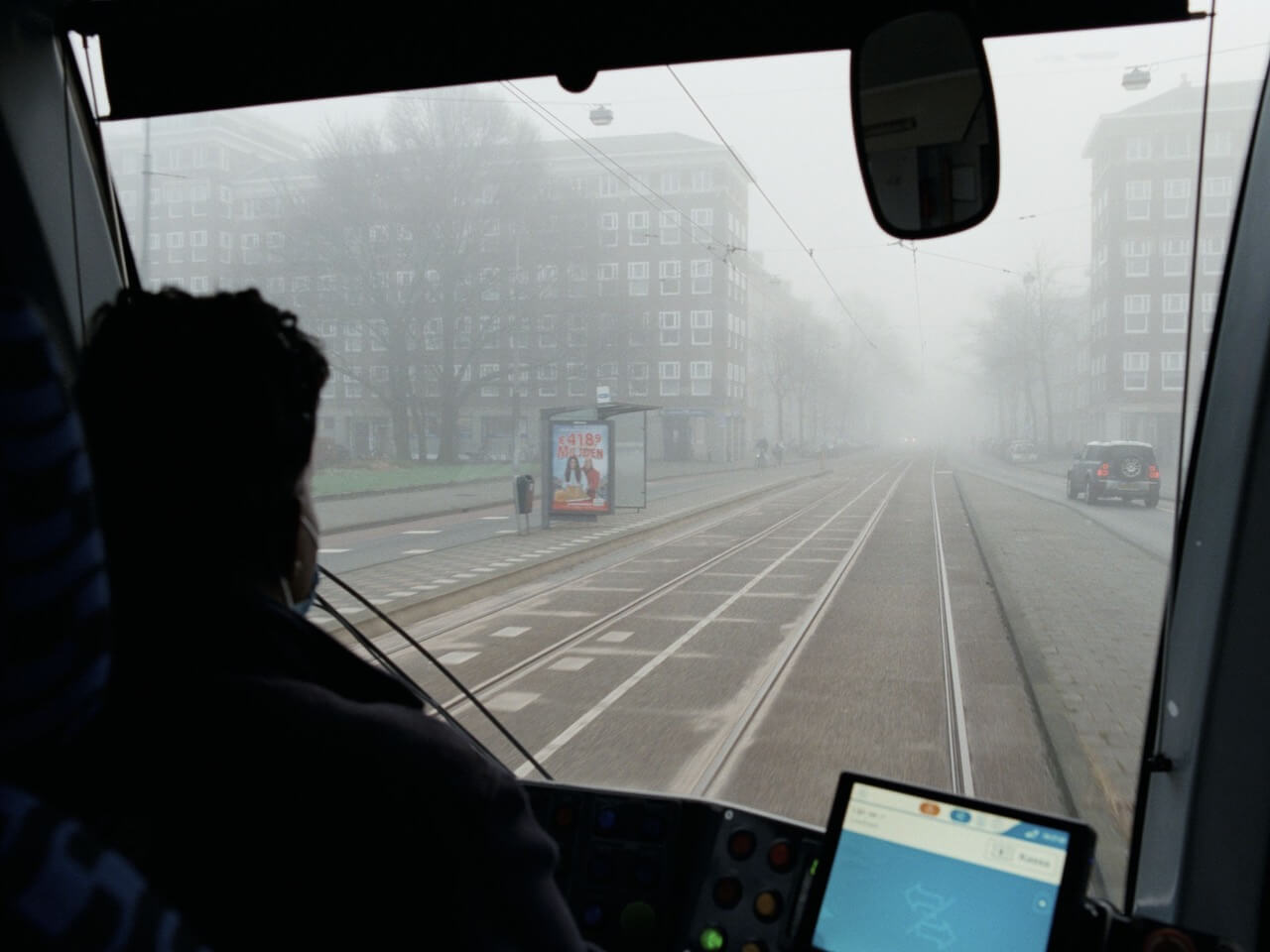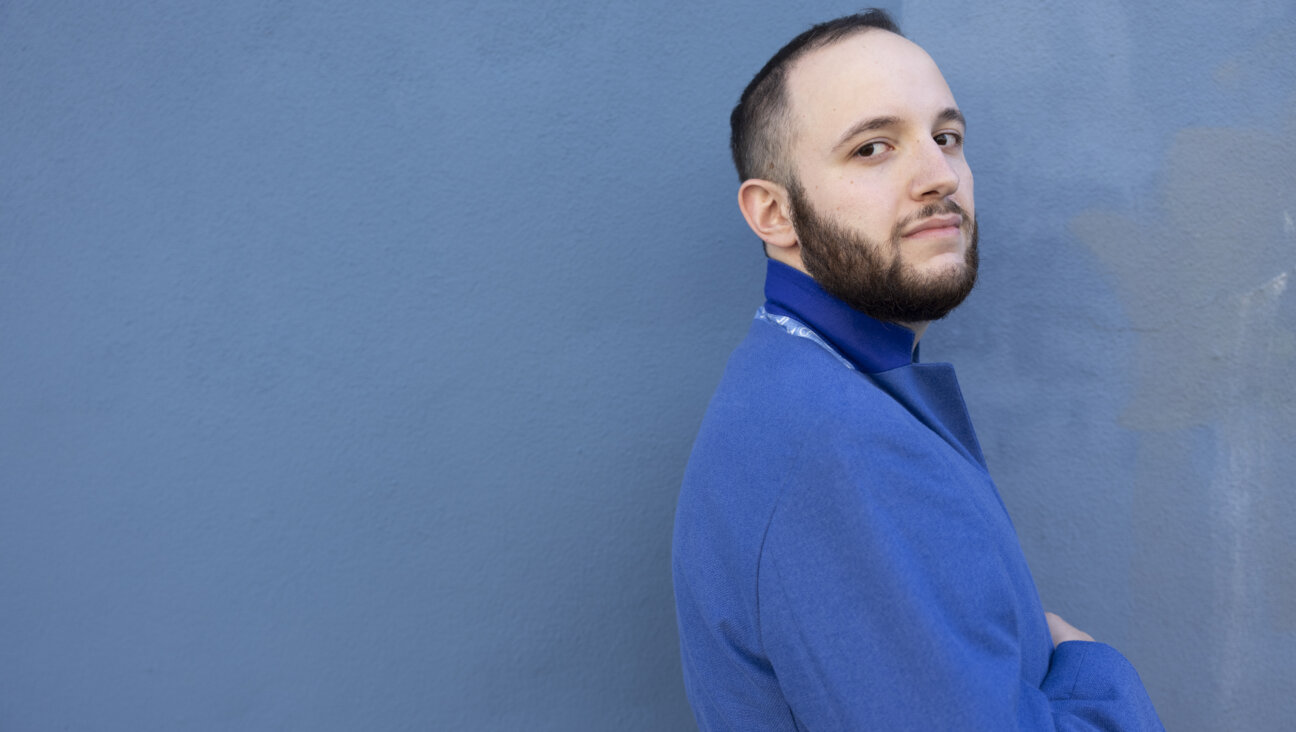Steve McQueen’s over-4-hour tour of modern and Holocaust-era Amsterdam makes history mundane — and unbearably boring
‘Occupied City’ is a morbid slideshow of buildings that are no longer standing

Steve McQueen’s film is composed entirely of contemporary footage of Amsterdam. Courtesy of A24
The Nazis and their accomplices murdered three quarters of the Netherland’s Jews. For five years — from 1940 to 1945 — a Nazi occupation impacted every facet of Dutch life and fostered intricate networks of both resistance and collaboration. The most famous victim of the Holocaust hid for two years in an Amsterdam attic.
Despite all this, a study from January of this year found that a majority of Dutch people didn’t know the Holocaust affected their country. The findings seem inconceivable — and somehow even more alarming than the 25% polled who believed the Shoah was either a myth or exaggerated.
How could the Dutch miss what’s right under their noses? If you endure Steve McQueen’s new documentary, Occupied City, you’ll start to understand.
Around three hours into the film’s over-four-hour runtime, a group of people assembles at a memorial for Jewish resistance fighters at the edge of a canal. There, a woman speaks about the need to reach the youth through dramatic stories of Jewish survival, not merely death. As if on cue, a young man speeds by on a motor scooter, hooting at no one and nothing in particular. It’s doubtful he knows what he passed by in a blur, or if he’d care if he did.
McQueen, best known for narrative films like 12 Years A Slave, filmed all of the footage for Occupied City over the pandemic at addresses where atrocities took place. Another scene from the 2020s: A group of teens is sitting in a plaza, drinking beer and smoking. One mentions a video that has gone viral and shows it to another kid on his phone. The calm narrator, Melanie Hyams, informs us that where these kids congregate — and where one will shortly urinate behind a bush — was the site of its own viral spectacle back in the 1940s. There was a well-attended public execution of resistance fighters here. There’s even a memorial sculpture , but it’s easily ignored.
McQueen’s film, written by his wife, Dutch director Bianca Stigter, and inspired by her book Atlas of Occupied Amsterdam 1940-1945, doesn’t editorialize its exclusively contemporary visuals or add anything archival. The film takes the form of a morbid video slideshow, where images of modern life in the city seldom mesh, or even neatly juxtapose, with the many similar stories, related through Hyams’ voiceover, of what occurred at a given location in the 1940s: families who took their lives via gas asphyxiation; the Jews who informed on their neighbors and the gentiles who hid theirs; the girls’ schools the Nazis repurposed as a site for torture and where, today, an annoying kid pounds his fist on every locker door he passes.
Occasionally we will get a glimpse of something relevant to the narration — like a sequence where the Dutch king places a stone on a new memorial for Jewish victims. More often we see something borderline bathetic, like the erstwhile site of a prison where the Frank family was detained, now home to a chess museum with a plaza and a Hard Rock Cafe. Slightly better is the Hollandsche Schouwburg, the former Jewish theater and later a place where Jews waited to be deported. Inside the theater is a massive wall of Jewish family names, which we linger on; outside is a billboard advertising a new McDonald’s bacon sandwich.
Often, after a site is described in detail — along with an event of interest that occurred there and the names of victims and perpetrators — we’re told the structure was “demolished,” and so, we’ve been staring at newer buildings on the same ground, where young people carouse and play VR video games and older folks do group physical therapy. A point is being made, but it’s hard to know what precisely it is. It’s not simply that the past has been paved over, as the film regularly tries to find some tenuous thematic link between then and now.
There is a hazard to McQueen’s endeavor of which he seems to be dimly aware. The early parts of the film were shot during the first days of the pandemic and include the institution of Amsterdam’s first curfew since the 1940s and protests to ease restrictions. Given how ready some were to seize on insidious and wholly specious parallels between safety protocols and the suffering of Jews under the Nazis, including donning yellow stars that said “unvaxxed,” matching these points in history is a provocative choice. McQueen at first flirts with the association between government lockdowns and life under a brutal occupation, but undercuts it when, in a transit hub that once processed Jews for deportation, he shoots a long montage, set to David Bowie’s “Golden Years,” of Dutch citizens herded in to get COVID-19 vaccines. To put a finer point on how incomparable these comparisons are, an old woman, in a rare piece of diegetic dialogue, says, post-shot, “I didn’t feel a thing.”
The overall thesis from my viewing, with its hopeful bar mitzvah epilogue and a smattering of strained analogues like climate marches and rallies against fascism at squares where liberties were once stripped away, seems to be that life goes on and not much is remembered — in spite of modest attempts at commemoration like a stumbling stone we see placed by the home of four murdered Jewish sisters. But this concept needn’t have been conveyed in so long a slog and feels like it would be better realized in short form.
It’s hard not to be bored by the endless litany of war crimes, or worse, numbed. Comparing McQueen’s film with its A24 companion piece, Jonathan Glazer’s The Zone of Interest, is unflattering, in that the latter uses contemporary footage only briefly to make a devastating statement about historical memory. In abjuring the archive, one senses McQueen is trying to emulate Claude Lanzmann’s Shoah, while refusing to incorporate its essential thread of survivor testimony.
McQueen’s film is just a hair shorter than Marcel Ophuls’ The Sorrow and the Pity, a documentary about occupied France that broaches many of the same themes and is far more compelling for interviewing those who remember their wartime exploits, or who’d rather you’d forget them. Even so, McQueen and Stigter — whose much better Three Minutes: A Lengthening took a fragment of archival Holocaust film and made it feature length — claim a degree of merciless editing by teasing a version that is 36 hours long. The mind reels at the prospect of sitting through gorgeously shot modern b-roll paired with the wartime history of every street in a city for over a day, when this cut already has two separate stories of Jewish ice cream shop owners and their tragic fates.
One thing Occupied City won’t do, even with the cool, prestige imprimatur of A24, is win over today’s distracted youth. Too much context can be tedious. As sad as it is to see so many Netherlanders’ indifference to history, McQueen’s film makes it all make sense.
The film Occupied City is in theaters Dec. 25.

















